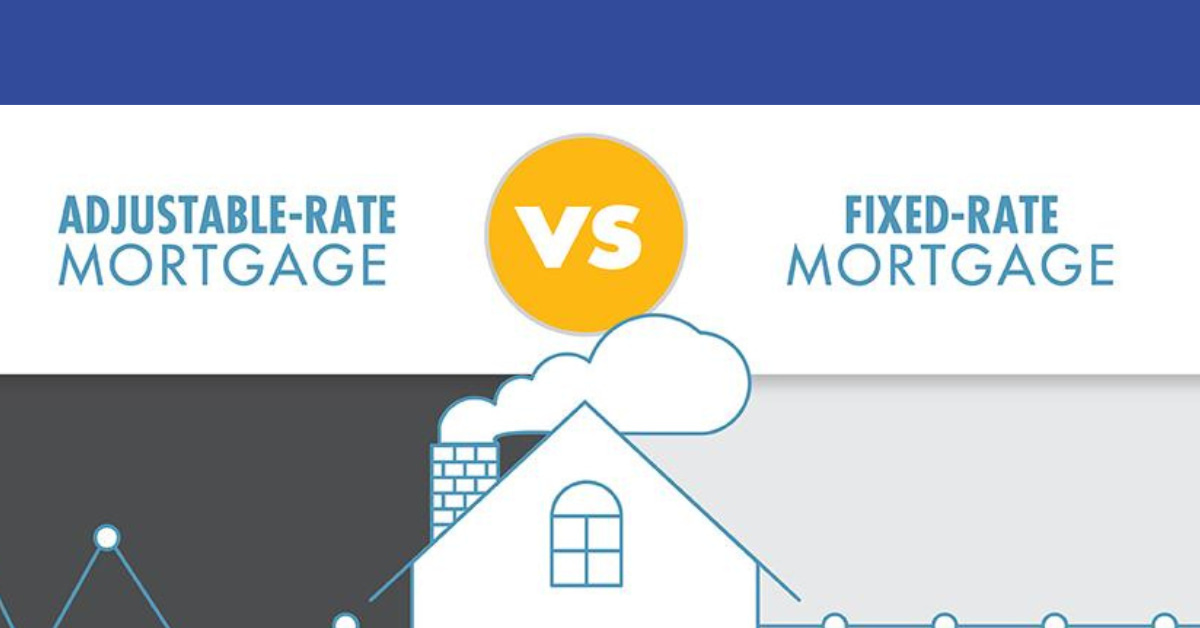
Understanding Mortgage Options: Fixed vs. Adjustable Rates
When you’re ready to plunge into the world of homeownership, one of the most crucial decisions you’ll face is choosing the right type of mortgage. Two of the most common options are fixed-rate mortgages and adjustable-rate mortgages (ARMs). Understanding how each one works will help you make an informed choice that aligns with your financial plans and goals.
Let’s dive in and unravel the mystery behind these mortgage types, ensuring that by the end of this article, you’ll walk away with a clearer picture of which might suit you best.
What is a Fixed-Rate Mortgage?
Imagine a mortgage that’s like a straight road with no unexpected turns – that’s a fixed-rate mortgage. With this type of mortgage, the interest rate stays the same throughout the entire life of the loan. Whether it’s 15, 20, or 30 years down the line, your interest rate won’t change. For many, that’s a comforting thought.
Pros of Fixed-Rate Mortgages:
- Predictability: Because your interest rate remains unchanged, your monthly mortgage payments will be the same year after year. No surprises here!
- Budget-Friendly: This consistency makes it easier to budget your finances, especially for long-term planning.
- Stress-Free: Fixed rates shield you from the anxiety that can come with fluctuating interest rates in the economy.
Cons of Fixed-Rate Mortgages:
- Higher Initial Rates: Typically, fixed-rate mortgages start with a higher interest rate compared to adjustable-rate mortgages.
- Less Flexibility: If interest rates fall, you might be stuck paying a higher rate unless you refinance, which involves additional costs.
What is an Adjustable-Rate Mortgage?
Picture a winding road with ups and downs – this is akin to an adjustable-rate mortgage. ARMs start with an initial fixed interest period, often lasting 5, 7, or 10 years. After this period, the interest rate adjusts at predetermined intervals, depending on the market rates.
Pros of Adjustable-Rate Mortgages:
- Lower Initial Rates: ARMs often offer lower initial interest rates, which translates into lower initial monthly payments.
- Chance of Decrease: If interest rates in the market go down, your rates—and by extension, your payments—might decrease too.
- Short-Term Savings: If you plan to sell or refinance before the initial fixed period ends, you can benefit from those early low rates without being affected by the later adjustments.
Cons of Adjustable-Rate Mortgages:
- Risk of Increase: Your mortgage payments can increase once the initial fixed period is over. This can sometimes be significant and unpredictable.
- Complexity: ARMs come with complicated terms and conditions that can be confusing, such as caps, margins, and adjustment indexes.
- Financial Uncertainty: The unpredictable nature of future payments makes it harder to budget and plan for the long run.
Choosing the Right Mortgage for You
When deciding which mortgage to choose, reflect on your financial situation, your plans for the future, and how much risk you’re willing to take on. Here’s a breakdown to help you decide:
- Consider a Fixed-Rate Mortgage If:
- You plan on living in your new home for many years.
- You prefer consistent payments for easy budgeting.
- You’re not comfortable with the risk of rising interest rates impacting your payments.
- Consider an Adjustable-Rate Mortgage If:
- You plan to move or refinance before the end of the initial fixed-rate period.
- You expect your income to increase in the future, which would help you handle potential payment increases.
- You’re comfortable with a bit of uncertainty and willing to risk potential rate increases for initial savings.
Key Considerations for All Homebuyers
No matter which type of mortgage you lean towards, there are a few key considerations to keep in mind:
- Rate Caps: For ARMs, rate caps limit how much the interest rate can increase. Understanding these can help you evaluate the risk involved.
- Refinancing: You always have the option to refinance your mortgage. However, this involves new closing costs and possibly a new interest rate, which could be higher or lower depending on the market.
- Economic climate: Keep an eye on the broader economic environment. Interest rates fluctuate, and what seems like a good decision now might change in the future.
- Financial Goals: Your long-term financial goals should drive your mortgage choice. Whether it’s stability or short-term savings, ensure your mortgage aligns with your plans.
- Ask Questions: Don’t be shy! Consult with a financial advisor or mortgage broker to get clear on all the terms and implications of your mortgage options.
Understanding Mortgage Language
Mortgages come with their own language, and it’s important to understand the jargon. Here are some key terms:
- Interest Rate: The percentage of your loan amount charged by the lender for borrowing money.
- Principal: The amount of money you borrow, which you’ll have to pay back along with interest.
- Term: The length of your mortgage. Common terms are 15, 20, and 30 years.
- Amortization: The process of paying off a loan with regular payments over time.
- Equity: The portion of your home you actually own, which is the home’s value minus the outstanding mortgage balance.
In conclusion, whether you decide on a fixed-rate mortgage or an adjustable-rate mortgage, the key is to be well-informed. Take the time to understand your options, the terms involved, and how each can impact your financial future. By making an educated decision, you will be more likely to choose the mortgage that’s just right for your journey toward homeownership.
Remember, owning a home is one of life’s significant milestones, and how you finance it is a major piece of the puzzle. Choose wisely, and that dream home can provide not just a roof over your head, but peace of mind, too.